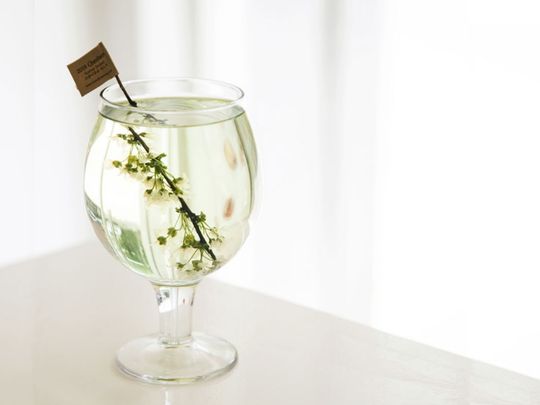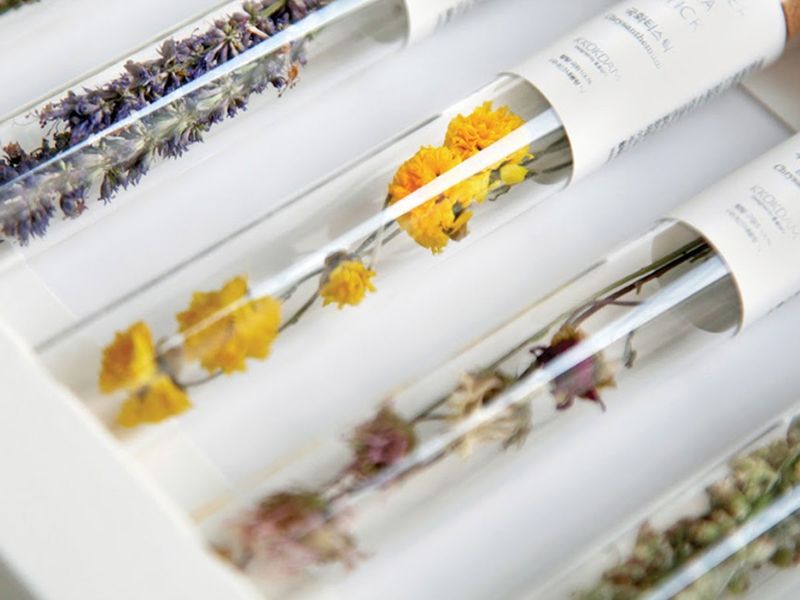
Dubai: Get ready to taste South Korea’s popular floral teas, right here in UAE. The Korean Cultural Center will be hosting an exhibition called ‘Blooms in a Cup: Flower Tea' at the Korean Cultural Centre in Abu Dhabi, this month.
From May 22 to June 13, the exhibition will introduce a variety of Korean flower teas to visitors, demonstrate how to make flower teas, and host a flower tea tasting opportunity allowing participants to sample the teas and learn about the culture.
From stress relief to anti-inflammatory effects, floral teas are known to have many benefits and are naturally caffeine-free.
Participants can also enroll for the Korean food workshops, featuring delicacies like flower cordial, vinegar, and tea confectionery called ‘Dasik’ in Korea.
According to a press release issued by the KCC: “More than ten flower teas, including magnolia, cherry blossom, lotus, acacia, will be on display, and visitors are free to visit at any time to learn about and experience the benefits and flavors of the teas.”
What is flower tea?
While Korea is not the first country to make and drink tea from flowers, there are historical records of flower being used to make teas, in Silla Dynasty (57 BCE – 935 CE). Korea has a climate with four distinct seasons, allowing for a wide variety of flowers to be used in teas, which are now also popular for their beauty and health benefits.

“Just as some flowers bloom in the morning and others in the evening, and some flowers are heat-tolerant and others are heat-resistant, based on which the method of making flower tea varies. Heat-tolerant flowers are dehydrated slowly at a low temperature, while heat-loving flowers are dehydrated at a high temperature, wrapped in cotton cloth and rubbed to change the shape of the flower. Depending on the flower, it is steamed or blanched in water several times,” the press release added.
Here are the 12 flowers, which are used to make teas in South Korea. They will be also used in the tea exhibition:
1. Plum Blossom
The flower blooms between February and April and symbolises nobility, patience, and a pure heart. Plum blossoms are flowers of the plum tree, and they bloom before the severe cold goes away. Plum blossoms contain malic acid, citric acid, tartaric acid, amygdalin, benzaldehyde, and caffeine, which relieve thirst, cough, and nausea. Plum blossoms have long been used as herbal medicine in Korea for calming anxiety.
2. Magnolia
The flower blooms in March and April and symbolises luck, stability, purity, nobility, and dignity. Magnolia has a slightly spicy taste and is considered to help relieve nasal congestion and symptoms of sinusitis and rhinitis. It contains flavonoids and alkaloids which help to remove phlegm and dispel cold energy.
3. Korean Rosebay
This flower blooms in March and May and symbolises the happiness of love and prosperity. Korean rosebays thrive in sunny mountainous areas. This is a sign of spring in Korea, and the flower blooms before the leaves. They are sturdy plants and endure in tough conditions. Korean rosebays are edible flowers and have been traditionally used in various cuisines like Korean flower pancakes called Hwa Jeon, and in drinks. However, the food can become toxic if not cooked correctly. Korean rosebay flower tea is good for alleviating coughs and clearing phlegm.
4. Cherry Blossom
The flower blooms in April and May and symbolises beauty, purity, and transience. The common cherry blossoms that bloom in Korea bear fruits called Bujji, one type of many cherries. Cherry blossom tea is renowned for its lovely pink color and delicate, sweet taste. It is believed to be good for skincare, improving skin conditions such as freckles, and also helps with hypertension and asthma.
5. Bridal Wreath
The flower blooms in April and May and symbolises fertility and prosperity. The flower, which looks like puffs of millet grains and is used as a bridal accessory, gives its name. The flower contains high salicylic acid, a main ingredient in aspirin. According to the Korean herbal medicine book called Donguibogam, bridal wreaths are described as ‘healing malaria, promoting expectoration, and regulating fevers.’ They are also known to be good for neuralgia and diarrhea.
6. Acacia
The flower blooms in May and June and symbolises pure love, secret love, and friendship. Although Acacia is grown all over the world, it is commonly grown in Korea. Acacia is rich in robinin, which is well known for healing conditions like nephritis (inflammation of the kidneys) or cystitis (inflammation of the bladder).
7. Marigold
The flower blooms in June and October and symbolises happiness, power, strength, and light. Marigold tea has a sweet taste and contains rich lutein, which helps eye health and alleviates dry eyes. It is also good for hypertension, asthma, and stomatitis.
8. Lotus Flower
The flower blooms in July and August and symbolizes purity and rebirth. Lotus Flowers, revered as sacred flowers in Buddhism, bloom cleanly and nobly even in muddy waters. Lotus flower tea is among the largest varieties of flower teas. It helps in blood circulation, prevents anemia, and also helps with diarrhea, hypertension, and headaches.
9. Kudzu
The flower blooms in July and August and symbolises a sigh of love. The Kudzu tree provides a source of healthy ingredients for Korean food from their roots, flowers, and leaves. Kudzu leaves are eaten as vegetable dishes in Korea, and dried twigs and roots are used for tea and herbal medicine. In oriental medicine, Kudzu flowers were used for detoxifying effects, improving liver function, and aiding hypertension, osteoporosis, and menopausal symptoms.
10. Cockscomb
The flower blooms in August and September and symbolizes love, affection, passion, and courage. The flower’s name is given because it looks like the comb of a rooster. In oriental medicine, it is known to be effective for people experiencing bleeding or inflammation. It contains rich anthocyanin pigment, which improves immunity and has effects on relieving conjunctivitis, bruises, and enhancing vision.
11. Siberian Chrysanthemum
The flower blooms in September and October and symbolises mother’s love, purity, and a graceful figure. Siberian Chrysanthemum is a perennial herb commonly found in Korea, China, and Japan, also known as Siberian Chrysanthemum. It resembles a daisy and blooms in autumn, whereas daisies bloom in May and June. Siberian Chrysanthemum is good for menstrual pain, irregular menstruation, gynecological disorders, and cold extremities.
12. Chrysanthemum
The flower blooms in September and November and symbolises longevity, joy, and optimism. Chrysanthemums bloom in late autumn, overcoming the first chill. Depending on the type of flower, Chrysanthemum can be used in different ways; it can be used for tea, cuisine, or medical purposes. Chrysanthemum indicium is commonly used for tea, and chewing the petal gives a sweet taste.










